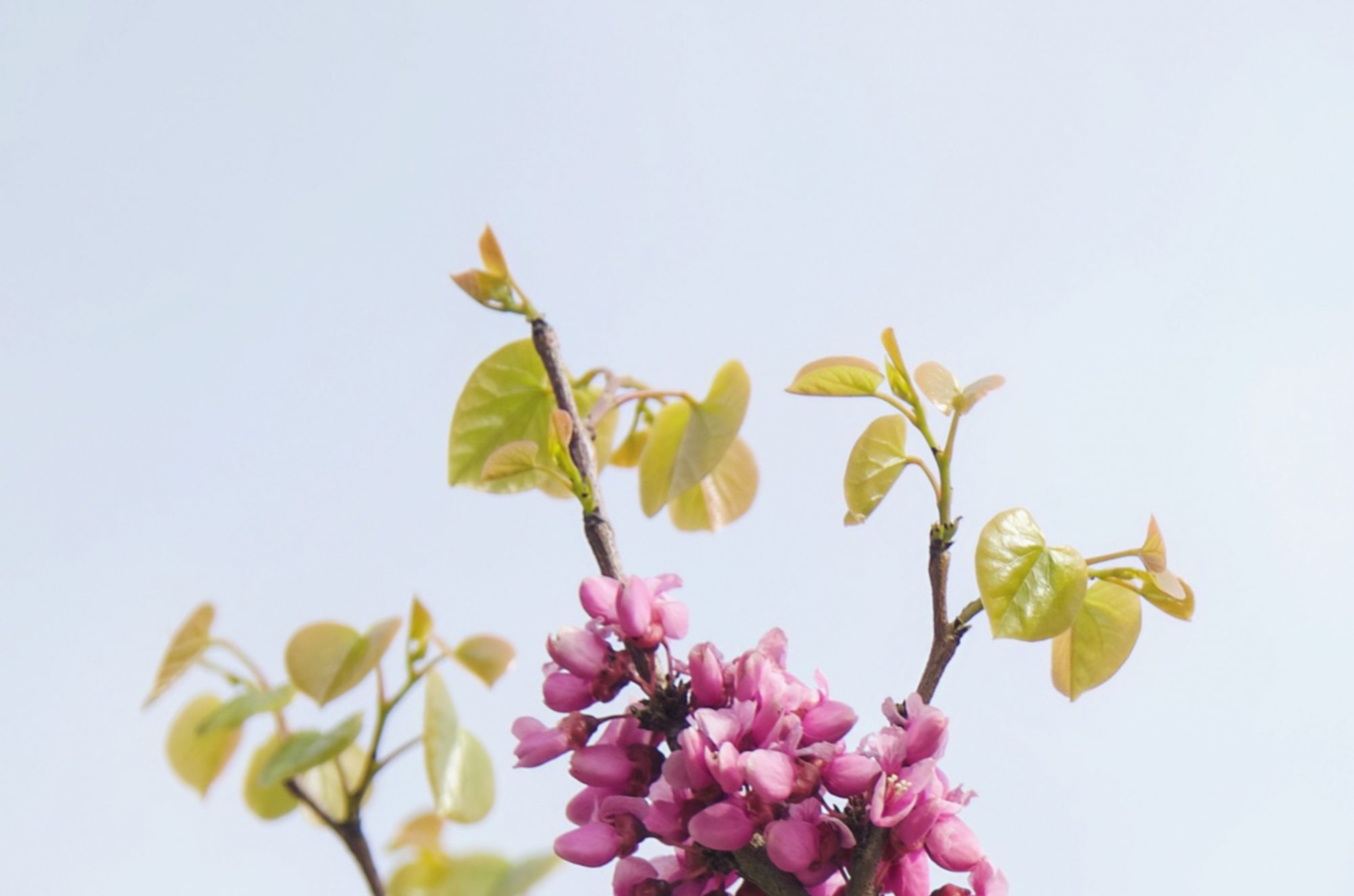Mark making research
Mark making is a term used to describe the different lines, patterns, and textures we create in a piece of art. It applies to any art material on any surfaces and with any tools. Mark making is a fundamental element in making any type of art and it is how we begin to express emotion, movement, and other concepts we wish to convey in an artwork. It can be structured or uncontrolled. Most artists work with various kinds of marks in every painting, but there are also some styles just with one type of mark. It is easy to think of a mark as a building block for whatever we choose to create:
- A single mark creates a dot.
- An extended mark becomes a line.
- A cluster of marks become a shape.
- A series of repetitive marks become a pattern.
Mark making artists and techniques

Jackson Pollock, an influential Action Painter. He is one of the leaders of the avant-garde Abstract Expressionist movement, and is considered as one of America’s greatest artists. He became particularly well-known for drip-painting, a radical new technique that he developed. But his painting materials and methods are not limited to brushes, and instead dripping, splattering, and pouring house paint from the can, also using sticks, knives, and trowels.
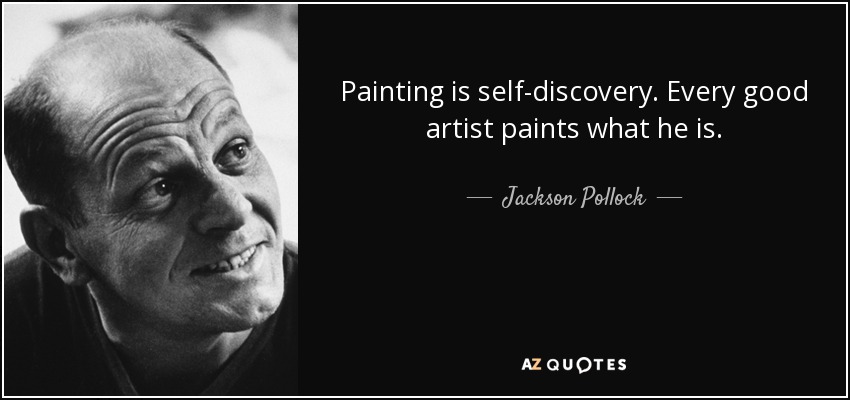
Many of Pollock’s paintings also display the “all-over” method of painting. In these paintings, there are no clear focal points, and everything is equally weighted. For Pollock, it was more about the rhythm and repetition of movement, gesture, and mark within the vastness of space as he conveyed primal emotion into abstract painting.

There are some mark making ideas that I am going to experiment with my own tools. Such as broken lines, interlocking lines, loops & scribbles, jagged zig zags, etc. And I hope that I can explore some more interesting mark making ideas during the experimental process.
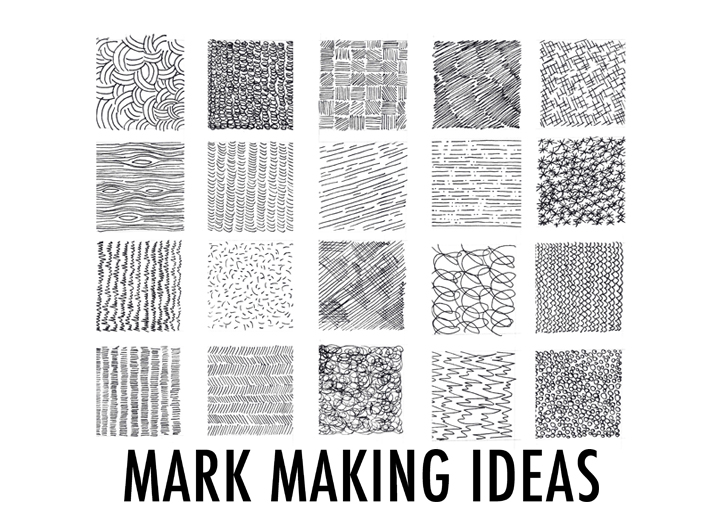
Bubble print/Marbling Techniques
There is an another interesting technique of mark making which is by blowing down a straw into a bowl of ink mixed with washing up liquid creates a number of ink bubbles. Placing paper in contact with the bubbles will burst them transferring a perfect, mirror image of the bubble structure. Similar technique and outcome using marbling inks.


Painting with candle smoke
Painting with smoke or fumage is a technique by using the smoke from a lit candle to create images on canvas or a piece of paper. The technique is thought to have been invented and popularised by Austrian-Mexican artist Wolfgang Paalen. This technique can be used alone or combine with other traditional painting techniques to add more form and meaning to the artworks. And the effects can be stunning and interesting.
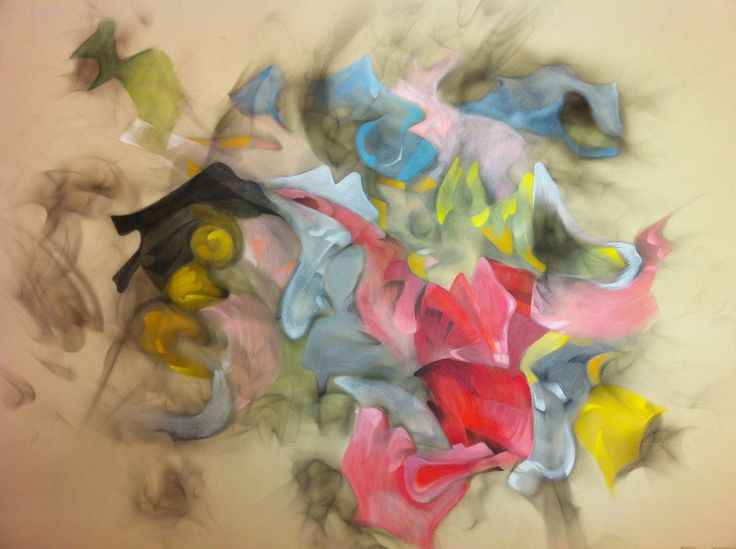
A basic overview of monoprinting is that a monoprint is a one-off print technique in which an image, produced on a plate, transferred to paper. The printing surface can be any type which is flat, smooth, and non-absorbent. For example, plexiglass or thin sheets of metal such as cooper or zinc is a suitable material. The beauty of monoprinting lies in its spontaneity and its allowance for combinations of printmaking, painting and drawing media.
According to the research online, there are 3 main monoprint techniques:
- The additive or light-field method, in which the image is painted by adding pigment onto the plate. so you can create your image directly on a clean plate.
- The subtractive or dark-field method where the entire plate is covered with a thin layer of pigment using a roller, which the artist then works out his image by selectively removing or wiping some of the pigment with brushes, sponges, sticks, or other tools. Paper is then directly placed over the plate.
- The third method is a combination of the two.

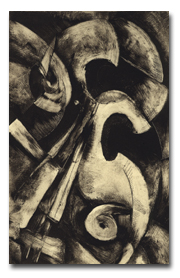
L: Basic etching, printed before the additional ink was applied with brushes.
R: Final print
Rapsodia, 2001
© Colleen Corradi
Automatic techniques
Automatic technique is the process of creating art without any rational thinking, which also can be described as “expressing the subconscious.” In automatic drawing or painting, the hand is allowed to move ‘randomly’ across the paper. This unique method of art making has been largely used not only by surrealists, but by other modern and contemporary creators as well.

I hope that I can enjoy and learn through the experimental process. Create some interesting mark.
